Norman Franke – 11 October, 2024
A lot of the prints oscillate between earthiness and an almost ethereal transparency. Roots has the gift of combining these two opposed qualities together. The size of the grasses and flowers depicted sometimes also changes when you look at them: what was just an ear of grass close up looks more like a Kahikatea tree from a distance. The transparent microcosm, when looked through, becomes a macrocosm.
Sue Roots’ Where the Wildflowers Are is a wonderfully accessible exhibition that once again demonstrates the high standard of Printmaking at the Waikato Society of Art (WSA). Over 200 of Roots’ small and medium format etchings and monoprints can be viewed in the Ruth Davey Gallery.
The exhibition’s title is inspired by, among other things, Maurice Sendac’s children’s book Where the Wild Things Are. A copy of the congenially illustrated children’s book is presented, together with an old identification book for wildflowers, next to the list of Roots’ works: indications that ‘wild things’ don’t have to be huge or dangerous, but that they can also be found on small scales such as in the anarchic beauty of plants and leaves. They also remind us that, with the help of creative imagination, botanical details can morph into fantastic patterns, images and sometimes—even great stories.
The intimate exhibition space of the Ruth Davey Gallery is particularly suitable for the smaller formats of the pictures. Many flower portraits are designed directly from nature, while others are arranged into vase pictures or ornamental designs. The monoprints especially are reminiscent of paper cuts, or the dried flowers sometimes found in old tomes owned by grandparents or antiquarians.
A lot of the prints oscillate between earthy density and an almost ethereal transparency. Roots has the gift of combining these two opposed qualities together. The size of the grasses and flowers depicted sometimes also changes when you look at them: what was just an ear of grass close up looks more like a Kahikatea tree from a distance. The transparent microcosm, when looked through, becomes a macrocosm. As William Blake said in his poem Auguries of Innocence : ‘To see a World in a Grain of Sand / And a Heaven in a Wild Flower / Hold Infinity in the palm of your hand / And Eternity in an hour…’
There is mana and holiness in the life and beauty of wildflowers. In Biblical literature, their intricate splendor can outshine the wardrobe of King Solomon. The cornflower (Centaurea cyanus) which Roots depicts, is connected to the wise old centaur, Chiron, of Ancient Greek mythology, who used it for wound healing.
Attention to the minute details of herbs and flowers in printmaking starts with the European Renaissance. Albrecht Dürer’s Great Piece of Turf (1503), his Eight Studies of Wild Flowers (ca 1515 - 1520) and Three Medicinal Herbs (1526) are early examples. Botanical engravings served as both an art form and a tool of science for many Enlightenment naturalists. Women such as Maria Sybilla Merian (her book about flowers, Neues Blumen Buch appeared in 1680) and Elizabeth Blackwell (Curious Herbal, ca. 1737) were at the forefront of botanical illustration.
The mutual cross-fertilisation of science and art continued well into the 18th and 19th centuries when the illustrated order of flowers within the Linnaean system became popular with botanists and art collectors alike. Even in the age of photography, the early taxonomic guides to the Flora of New Zealand’s botanical regions often show drawings and etchings rather than photographs. The English Arts and Crafts Movement, particularly its leader, William Morris, transformed some of these visual discourses into artistic designs for wallpapers, textiles and fine china. There is an echo of many of these traditions in Roots’ printmaking.
All of Roots’ prints are engraved and coloured with great care and skill. Roots has a special eye for layout and the natural tones within the colouring of objects depicted on paper. Some of the larger formats are framed with wood and glass; others are more spontaneously hung using small nails and coloured twine. There are also fine examples of expertly embossed paper. Some monochromes are folded into vase covers. All works are for sale.
Roots continues a rich tradition of Waikato printmaking. Artists like Ruth Davey, Joan Travaglia and Campbell Smith have printed, exhibited and taught at the WSA. The recent Waiprint 2024 exhibition attests to the breadth and depth of printmaking expertise in and around Hamilton. Having worked as a primary school teacher in Hamilton for many years, Roots has shared her passion for art with many of her students and fellow artists. A few years ago, in the USA, I read a bumper sticker: If you can read this, thank a teacher. The same can be said for our ability ‘to read’ a painting or a print. Even, or rather particularly, in the age of AI, art making and art appreciation are invaluable skills. Not just manual and intellectual skills but life skills, skills of being co-creators of a wild and wonderful world.
Norman Franke
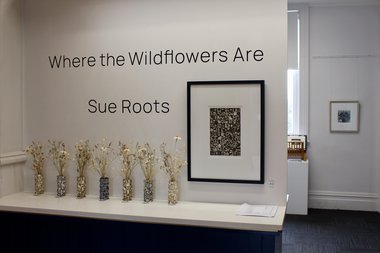
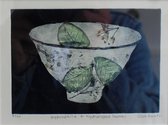
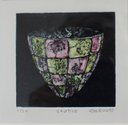
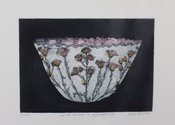
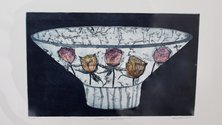
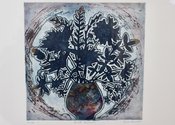
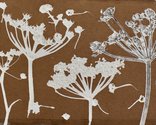
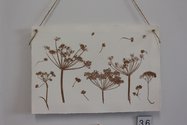
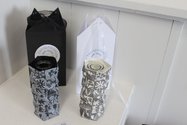

 Two Rooms presents a program of residencies and projects
Two Rooms presents a program of residencies and projects Advertising in this column
Advertising in this column

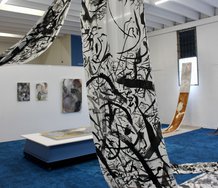

This Discussion has 0 comments.
Comment
Participate
Register to Participate.
Sign in
Sign in to an existing account.